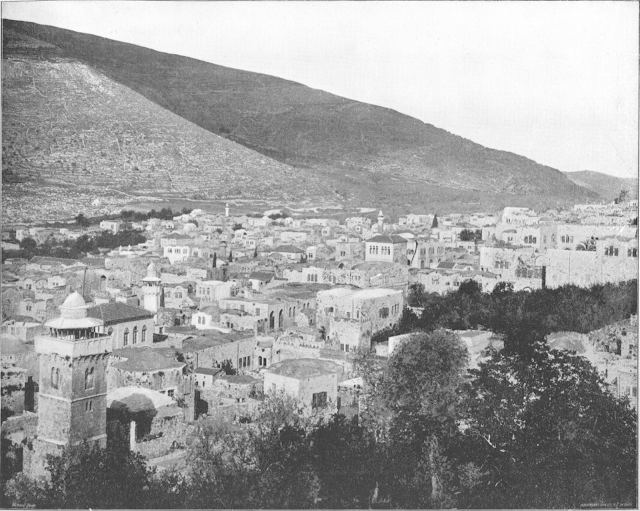Nablous
Passing between Gerizim and Ebal, Mary, Joseph and Jesus soon came to Shechem. Before us is a fine picture of the city, one of the most thrifty and well-kept of Eastern towns, with a population at the present day of about 20,000, of which 160 are Samaritans, 600 are Christians, 200 are Jews and the rest Mohammedans—bigoted and fanatical. The principal structures of the city are the mosques. The largest stands at the union of two streets, and has a Gothic gateway painted with red, white and blue. It was once a Christian church, but is now called “The Great Mosque.” There is also a Samaritan synagogue, not very well kept, but with its dome and skylight and the sacred recess where the ancient manuscripts are preserved. The Samaritans, like the Indians of America, are gradually dying out. Conder says that “ancient Shechem stood very nearly on the same site occupied by the large stone town of Nablous, with its well-watered gorge, full of gardens of mulberry and walnut, with vineyards and olive groves, above which rise the barren slopes of Ebal on the north and Gerizim on the south.” Although almost every traveler visits the Samaritan synagogue at Nablous, it is difficult to become acquainted with this proud and reserved people. And there are very few people living who have seen the oldest of the manuscripts of the Pentateuch—a treasure in their possession. It is perhaps the oldest copy of the Bible in the world, and until it has been read by a competent scholar it is impossible to say what light it may throw upon the Pentateuch.

Comments